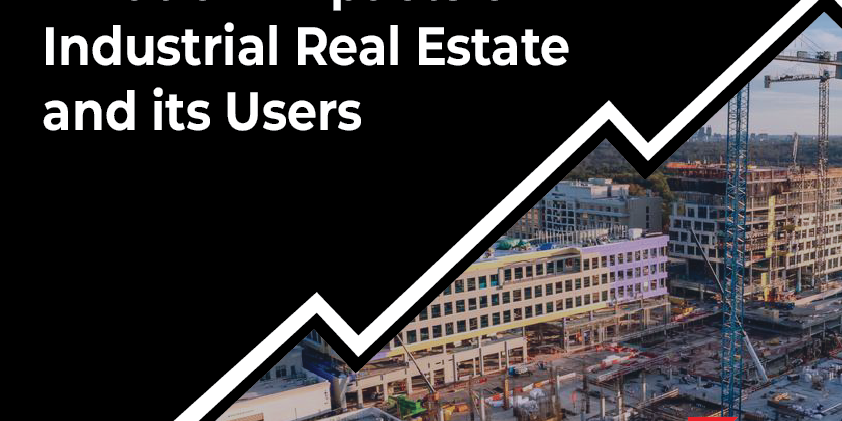Over the past thirty-six months, inflation has caused significant challenges the manufacturing, construction, general contracting, and e-commerce industries. These sectors are not only vital to the economy but also key drivers of industrial real estate demand. Understanding how inflation has shaped their operations offers a clear picture of its ripple effects on the commercial real estate market.
Manufacturing has been grappling with rising costs for raw materials and inputs. In 2024, manufacturers reported a 2.7% projected increase in input costs for the year ahead, adding pressure to profit margins. Materials like metals and plastics have become more expensive due to supply chain disruptions and global demand shifts. These cost hikes have forced manufacturers to reevaluate operations, often seeking more cost-efficient facilities or reducing expansion plans.
The construction industry, along with general contractors, has faced its own inflationary hurdles. Input inflation in construction surged to 19.6% in 2021, up from 4.4% in 2020, dramatically increasing project costs. Essential materials like lumber, steel, and concrete have remained costly, while labor shortages have driven wages higher. As a result, many construction firms have struggled to complete projects on time and within budget. Financing new developments has also become challenging due to higher interest rates, slowing the pace of new construction projects.
E-commerce has also experienced inflation’s pinch. Increased warehousing and logistics costs have eaten into profit margins, forcing businesses to adapt. While demand for warehouse space soared in recent years, it has cooled significantly in 2024. With industrial real estate under construction falling by 43% from 2023. Vacancy rates in warehouses have risen to 6.4% from 4.6% in 2023, reflecting a shift in the supply-demand balance.
All these challenges have directly influenced the industrial real estate market. Warehouse construction has slowed as developers face higher borrowing costs and uncertainties about demand. Despite rising vacancies, average rents remain high due to the limited availability of new supply, maintaining pressure on tenants. The combination of inflation, rising interest rates, and shifting market dynamics underscores the importance of strategic planning for both businesses and real estate investors.
Inflation has reshaped the landscape for industrial real estate users and investors alike. While it has presented significant challenges, it has also encouraged innovation and efficiency across industries. For stakeholders in manufacturing, construction, and e-commerce, adapting to this evolving environment is key to staying competitive and making the most of emerging opportunities in the industrial real estate market.
- Sources:
- Deloitte – Manufacturing industry outlook, reporting a 2.7% increase in input costs for manufacturers in 2024.
- CRC Group – Construction input inflation surged to 19.6% in 2021, up from 4.4% in 2020.
- Marsh McLennan – Inflation’s impact on the construction sector, leading to financial strain and project delays.
- Wall Street Journal – Industrial real estate under construction dropped by 43% year-over-year in Q3 2024, while warehouse vacancy rates rose from 4.6% to 6.4%.
- U.S. Bureau of Labor Statistics (BLS) – Consumer Price Index (CPI) inflation peaked at 9.1% in mid-2022, before moderating to 3.2% in late 2024.
- These sources provide verified data on inflation’s effects on manufacturing, construction, e-commerce, and industrial real estate markets.









